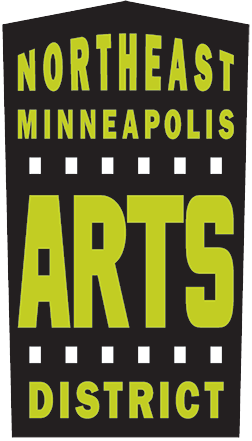Mary Cassatt, 1844-1926, is known among the impressionists for her depiction of mothers and children, a subject matter that was radically domestic for the art world of the time. But despite her focus on the bond between mother and child, Cassatt chose not to have children of her own because she believed having a family would compromise her career.
A century later, many women artists still feel this is true. Cassatt’s society may have preferred she be a mother than an artist, but in much of today’s art world, the bias skews the other direction. In academic or institutional settings, motherhood can be seen as taboo, unfashionable, or diametrically opposed with the mindset and lifestyle of the artist. Renowned performance artist Marina Abramovic has expressed that having children would be, for her, incompatible with being an artist. In 2014, British artist Tracey Emin famously stated, “There are good artists that have children. Of course there are. They are called men.”
The prevailing assumption here is that if you are a mother, you don’t have the time to be an artist. But the second, equally pervasive assumption for many is that if you’re an artist, you don’t make the money to support your family.
Several artist mothers working in the Northeast Minneapolis Arts District would disagree.
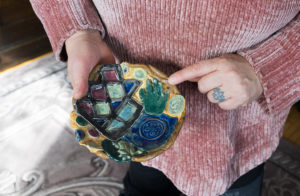
Sue Christensen spotted her opportunity to quit her full-time job and pursue an art career when she and her husband decided to have a baby. Homebound with a newborn, she set up a ceramics practice with a kiln in the basement. The combination worked, she said, because her practice involved many steps with breaks in between. Nearly three decades later, Christensen’s career remains strong and has grown to include painting.
Layl McDill, an artist and mother of two daughters, always knew she wanted to be both. “From as early as I could talk, I would tell people ‘I want to be an artist and a mother.’” Her firstborn was, in McDill’s words, “a lap baby.” With her art career steadily growing, McDill problem solved by switching from paint and mixed media to polymer clay, which she realized she could handle even with a baby on her lap.
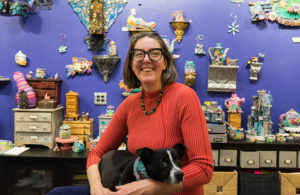
The make-or-break for the artist parent seems to be how well one can guard the time necessary for creative work, particularly in the years before their children go to school. Access to affordable childcare plays a huge role in this. Christensen’s mother came over three afternoons a week. Part of the same art community, she and McDill traded childcare to give each other time to create.
For Laura Tuhkanen, founder of the textile design studio Vaahtera, it isn’t just the amount but the quality of time that matters for creative work. Whereas parenting is all about routine, creativity requires longer stretches of unstructured time, and the manifold interruptions of parenting can make those opportunities rare. Similarly Suyao Tian, painter, owner of Viewpoint Gallery, teacher at MCAD, and mother of a three-year-old, says if she tried to focus on all of those pursuits at once, she couldn’t think.
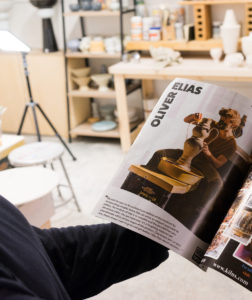
Painter Cory Favre has explored the conflicting feelings of motherhood in her latest body of work. Her show “The Thick of It” opens with a reception Thursday, March 3, 6-9 p.m. at the Casket Arts Building, #119 and probes the tension between “gut-dropping love” and “wanting to rip your hair out because you are so overwhelmed. ” Fittingly, Favre wasn’t available to speak on the phone: “Email might just be easiest for me with these kids running around,” she explained. She hopes the humor and playfulness of the show will be relatable to mothers and caregivers who are in “the thick of it.”
By most accounts, raising children can be a nearly all-consuming job, one that puts inevitable strain on creative time and equilibrium. But beyond finding ways to compartmentalize these two huge priorities, these women also succeeded by finding the connection between parenting and artmaking.
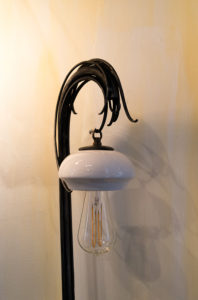
“Kid energy,” McDill called it. “My daughters would start playing with my materials, and before I knew it, I’d learned a new way to do something.” Even the tedious, maddening parenting moments could yield inspiration. “I did a series of sculptures called Monster Moms. One was a big monster with crying babies clinging to her legs as she’s trying to cook.” It wasn’t the quiet scenes of Mary Cassatt, but it was cathartic.
Being an artist profoundly shaped how they raised their children, with each working hard to let their children explore their own creativity. Looking at the big picture, Tian said, “parenting is artwork. I don’t see it as my child taking time away from my creative work, because my child is my greatest artwork.”
Lisa Elias, an artist and blacksmith, made sure her son was exposed to all kinds of music, art, and craft. She, McDill, and Christensen worked with their children’s schools to incorporate arts experiences. While Elias never put any expectation on her son to become an artist, he eventually found his own passion for ceramics—and he now shares part of his mother’s studio space as he pursues his practice professionally.
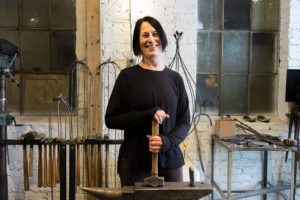
It’s encouraging to see these women not only exposing their children to creativity but demonstrating that art can be a viable career. Some of the perceived incompatibility between art and parenting is the misconception that you can’t make a living making art. McDill saw this firsthand. “People knew I was an artist, but I doubt they knew I was also the main breadwinner for our family much of the time.” Similarly for Elias, continuing to make art after her son was a matter of financial necessity: she had a family to support and preschool to pay for.
In the big questions of career and family, the prevailing beliefs that surround us make a difference. Christensen was raised to be an office worker because her parents saw that as the path to stable income. “My parents weren’t anti-art, but they weren’t going to waste money on art classes.” But in the art community of Northeast Minneapolis, she found a completely different attitude. “Northeast Minneapolis is a uniquely working-class arts community,” said Christensen. “That’s what made art approachable to me. I would never have become an artist without this neighborhood. I would have thought it was over my head and out of my reach.”
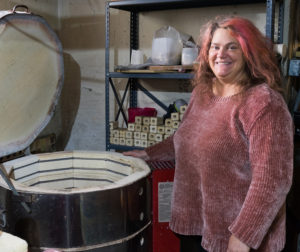
I came away from these conversations with a powerful admiration. None of these women glossed over how hard it is to raise children, nor how much work it is to make it as an artist, let alone to do both. And yet, they talked about those struggles with an untortured and clearheaded conviction. They wanted to be mothers; they wanted to be artists; they got creative and made it work.
Article and Photography by Katherine Boyce
